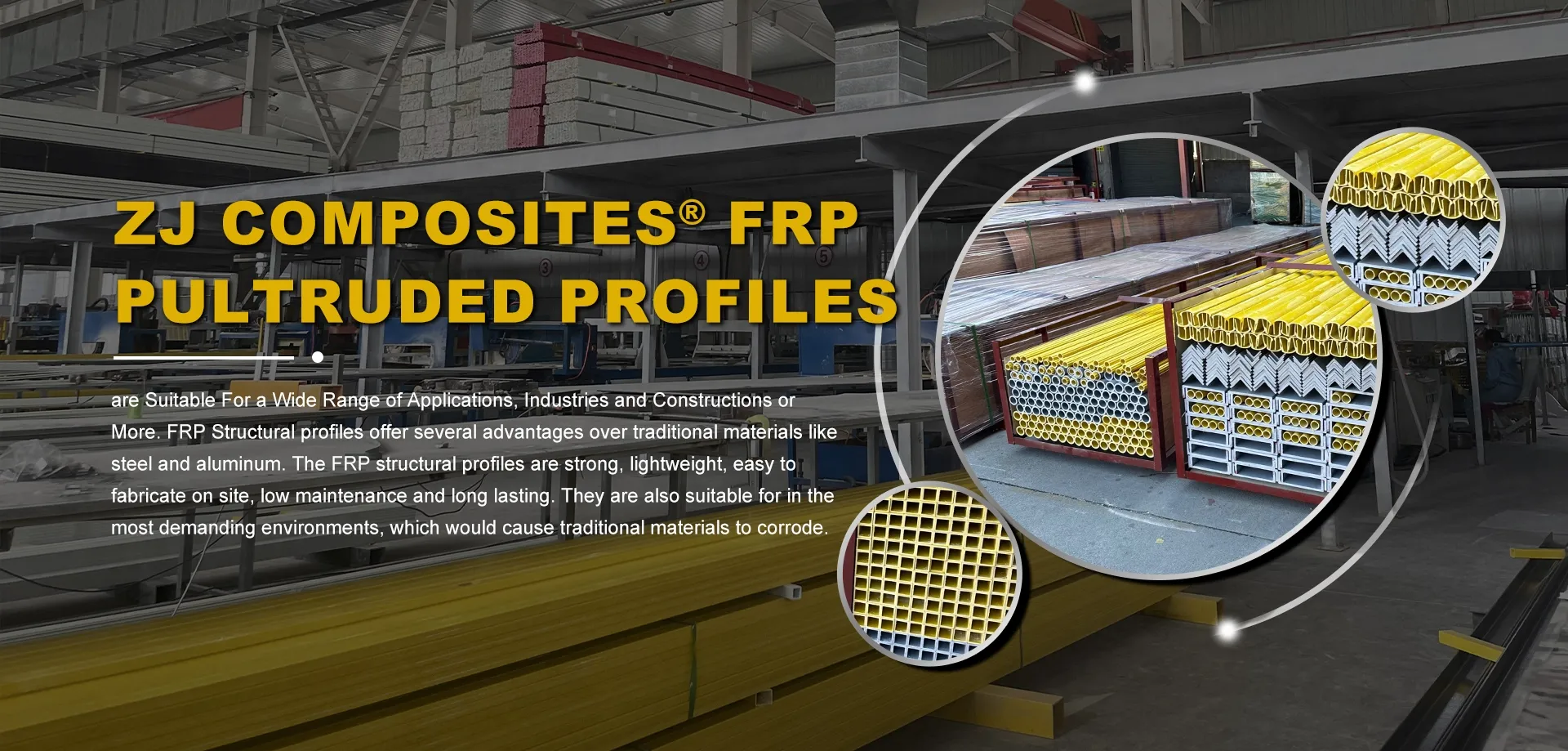loading...
- No. 9, Xingyuan South Street, Dongwaihuan Road, Zaoqiang County, Hengshui, Hebei, China
- admin@zjcomposites.com
- +86 15097380338
- Welcome to visit our website!
Mechanics and Design of Reinforced Concrete Utilizing FRP Bars for Enhanced Performance
Mechanics and Design of Reinforced Concrete with FRP Bars
Reinforced concrete is a composite material widely used in construction for its superior strength and durability. Traditionally, steel reinforcement bars (rebars) have been the standard for enhancing the tensile strength of concrete, given that concrete alone is strong in compression but weak in tension. However, with advancements in materials science, Fiber-Reinforced Polymer (FRP) bars have emerged as a promising alternative for reinforcing concrete structures. This article explores the mechanics and design considerations of using FRP bars in reinforced concrete applications.
Mechanics of FRP Bars
FRP bars consist of fibers such as glass, carbon, or aramid embedded in a polymer matrix. This unique composition results in an array of mechanical properties that can outperform traditional steel bars in specific applications. Key benefits of FRP bars include
1. Corrosion Resistance Unlike steel, which is susceptible to rust and corrosion, FRP bars are immune to environmental factors, making them ideal for structures exposed to harsh conditions such as marine environments or chemical plants.
2. Lightweight FRP bars are significantly lighter than steel, reducing the overall weight of the structure and simplifying transportation and installation processes.
4. Non-Magnetic and Non-Conductive FRP is non-magnetic and non-conductive, which is advantageous in applications such as electronic facilities or MRI rooms, where magnetic interference must be minimized.
Design Considerations
reinforced concrete with frp bars mechanics and design

The design of concrete structures utilizing FRP bars requires a thorough understanding of their mechanical behavior and how they interact with concrete. Some critical considerations include
1. Bond Strength The bond between FRP bars and concrete is vital for effective load transfer. Special attention must be paid to surface treatments of FRP bars to enhance this bond. Techniques such as sandblasting or ribbing may be employed to improve adhesion.
2. Thermal Properties FRP materials generally have lower thermal conductivities compared to steel, which can influence temperature distribution within a concrete member. Designers must account for differential thermal expansion between FRP bars and the surrounding concrete.
3. Serviceability Limit States While FRP bars provide high strength, their stiffness is typically lower than that of steel. This characteristic could lead to greater deflections in service, necessitating careful calculation when designing beams and slabs to meet deflection criteria.
4. Flexural and Shear Design The flexural capacity of reinforced concrete with FRP bars can be calculated using similar principles as with steel, but design codes often require specific guidelines tailored for FRP applications. Shear design also needs attention, as the shear strength of concrete may need to be assessed differently due to the lack of transverse reinforcement typically provided by steel stirrups.
5. Durability and Lifecycle Costs FRP’s resistance to corrosion extends the service life of structures, resulting in lower maintenance costs over time. This aspect is particularly important in lifecycle cost analysis, where initial material costs are weighed against long-term durability.
Conclusion
The adoption of Fiber-Reinforced Polymer bars in reinforced concrete design presents a compelling blend of performance and durability. With their unique properties, FRP bars offer innovative solutions for various construction challenges, particularly in environments prone to corrosion. However, successful implementation requires a deep understanding of their mechanics and careful consideration of design parameters to fully leverage their advantages while ensuring safety and functionality. As research progresses and design codes evolve, the use of FRP in reinforced concrete applications is likely to become more prevalent, paving the way for more resilient and sustainable construction practices.
-
The Rise of FRP Profiles: Strong, Lightweight, and Built to LastNewsJul.14,2025
-
SMC Panel Tanks: A Modern Water Storage Solution for All EnvironmentsNewsJul.14,2025
-
GRP Grating: A Modern Solution for Safe and Durable Access SystemsNewsJul.14,2025
-
Galvanized Steel Water Tanks: Durable, Reliable, and Ready for UseNewsJul.14,2025
-
FRP Mini Mesh Grating: The Safer, Smarter Flooring SolutionNewsJul.14,2025
-
Exploring FRP Vessels: Durable Solutions for Modern Fluid HandlingNewsJul.14,2025
-
GRP Structures: The Future of Lightweight, High-Performance EngineeringNewsJun.20,2025
